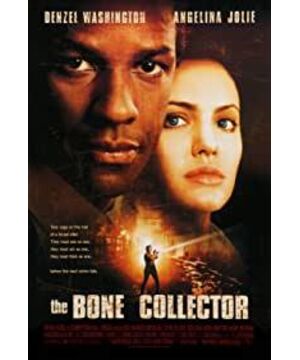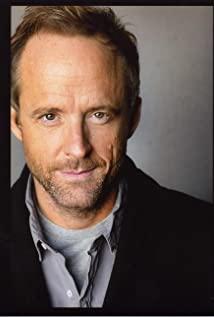After watching a film, you don’t know what it’s talking about, it’s not necessarily because you’re not good, but when you watch a film and think it’s talking about everything, it must be because the director is not good. Two days ago, sleepiness and I fought tenaciously to finish watching the "Mysterious Puzzle" broadcast by CCTV - it is said that it was broadcast many years ago before CCTV released 123456. (Central Six may have only a few translated films in total, and they will be released endlessly in a cycle of how many years, so you may be very surprised to see on TV that you didn’t watch it when you were a child after many years. I understand that foreign film that was translated in a mess.) The film is classified in the trailer as "Thriller Romance". In fact, it is difficult to classify. Generally, there are many elements in a movie, but when they are classified, they feel that none of them are appropriate. For example, the category of "Taipei 5 to 9" is "love/porn", which is very annoying. But I have liked detective films since I was a child (this category is also more general, let’s understand it), and I get excited when I see murder, reasoning, and so on, so despite being deceived many times in Central Six, I still sacrifice sleep and sit in the dark living room to watch it in the middle of the night. Finished . It really feels like a pot of gruel, with everything but not much. A parody and classic vulgar plot A mysterious name tells a terrible story. Belle Patrol Emily (Angelina Jolie) finds a terrifying hula body the day before she's about to be transferred to the office. The police handed over the troubled case to the black police officer Lem, who was paralyzed in bed due to a work injury and could move his head and fingers. Rhyme decided to force Emily to participate in the investigation because of the talent and courage that Emily showed when collecting evidence at the scene. After that, Lime took the command, and Emily went to the murder scene again and again to collect evidence, and finally revealed the mystery. Emily and Lime also have a vague relationship... It seems to be a rather vulgar story. A movie that turns hostility into love between peers. I remember that Julia Roberts played one before, and it was about two reporters. A policewoman who went into and out of the tiger's den alone finally succeeded and completed her personal growth. There is also a "Silence of the Lambs", and the image of Emily in this film is obviously not as plump as Angelina's lips, far from "Silence". The achievement is still a long way off. People who have seen "The Seven Deadly Sins" can easily associate the two. The film seems to be deliberately imitating the gloomy, gloomy, and dark feeling that "Seven" created for the city, and there is even a "wearing gang". For example, when Emily heard that someone called the police near the railway, she was obviously eating breakfast, and when she walked to the scene, it was already dark. Since she is a patrol officer, her task should be to deal with cases in her jurisdiction. If the road is so far away, why don't she drive? The next day, when Emily was in the teenage supervisory group, it was supposed to be in the morning. The light in the room was strong and obviously natural, but soon, when she was called out by her boss to get on the bus to Lyme, a panorama showed The dark blue oppressive sky of New York... This is actually an atmosphere imposed on the audience, and I am afraid it can be regarded as "aesthetic violence". From the conception of the story, it is also like an inferior replica of "The Seven Deadly Sins". They are all a series of puzzles left on purpose by a highly intelligent criminal, and there are a series of bloody and terrifying crime scenes that no one can understand. Yes, the murderer killed those "sinners" according to the seven sins of human nature according to Catholicism, while the murderer of "Mystery Puzzle" just made murders one by one according to the description of an old Gothic novel. "Seven Deadly Sins" has become a typical example of "film noir" and "criminal film" analysis, in which the profound reflection on human nature, society and even religion, a certain despair of the living space of human beings, the measurement and questioning of crime and punishment, etc., make the film absolutely unique. Not just at the level of visual impact. However, the simple imitation of "Mystery Puzzle" dissolves the thickness of this rationality. Since it's a "thriller", it's not finished without scaring you. One of the most obvious and clichéd of all the mysteries is the night Emily comes home from the horrific scene. Emily took a nap at home, and then the close-up door turned (classic vulgar episode 1), Emily woke up, opened the door, but there was no one outside (classic vulgar episode 2), which frightened Emily and the audience. Afterwards, Emily turned around, (feeling movement outside the window) facing the window, and suddenly opened the curtains. As a result, guess who is outside? Hey! It's Emily's colleague! This trick is vulgar, and I have used it many times in "Deadly Shouting" alone. And it doesn't make sense. Who doesn't knock on the door first, and then opens the window without opening the door? When it comes to scaring people, "No Country For Old Men" is typical, right? It is to frighten the audience enough, but after all, it is not abrupt in the narrative. If you want to say that crime, love, and thriller come together, there is no shortage of films, isn't "Instinct" just one? But these elements are perfectly integrated, because the hero and heroine are "cops and thieves", and the audience's psychology completely agrees with the hero's psychology. And "Mystery Puzzle"'s use of "thriller" as a selling point is completely superfluous, the trick of the murderer is enough to cause trouble, and it is not necessary to use such a pediatric trick to scare the audience. B The rise and fall of the power of gender: the second clue of the unknown If the puzzle is taken as the first clue of this film, then the rise and fall of gender should be the implicit second clue (I include the love of the hero and heroine). The film begins with Emily sitting by the apartment window in the early morning and looking out the window somberly, after which the panorama shows her boyfriend sleeping on the bed behind Emily. Then the boyfriend woke up and hugged Emily. Emily said that she was going to work, and her boyfriend asked him if he wanted to cook her something to eat. Afterwards, the boyfriend said: "...you know what I want" Emily said sternly: "I care about you very much, but I don't want to get married." This part of the plot is obviously subversive, Emily is a " "Strong woman" image, while her boyfriend is in aphasia, this contrast is rare. After finding the body and bravely blocking the train, the chief who arrived did not pay attention to Emily, dismissed her behavior, and even called her "idiot", largely because of Emily's gender. When Emily first went to see Lime, she used a subjective lens to close up Emily's lips in Lime's eyes. So despite Rhyme's constant praise for Emily's "talent, courage, and keen intuition" and justification for his insistence on reassigning Emily as his assistant, the audience seemed to have a sense that Rhym was "seeking public interest." Here, Emily's value, in fact, is still the "male eye" value. Rhyme encouraged and demanded Emily's two trips into the underground, abandoned, dark crime scene. "I'll always be with you, I'm with you every step of the way," Lim said. After arriving at the scene, the two spoke on a wireless phone. In other words, what Emily was acting as was actually Lime's body. That is, men perform complex thinking and women perform simple actions. After three murders, Rhyme's "puzzle" still has no clue. It was with the help of Emily and Lime's nurses that the case was solved critically. After this, Emily was able to successfully rescue a victim and entered an abandoned subway station according to the clues left by the murderer and Lime's instructions. Strangely, the communication between Emily and Lime was cut off as soon as she entered the subway station (this had never happened before, although every scene was underground), Emily was independently judged by a string of numbers left by the murderer. The next victim is - Lime! It turns out that the murderer was a former police officer who was imprisoned many years ago because of Lime's report. Just as the killer broke into Rhyme's room and raised a sharp knife at the paralyzed Rhyme, gunshots rang out - Emily appeared. (Classic and vulgar plot 3. I didn't worry about Lime at all when I watched it, I knew he would not die) At this point, we can sort out a context of the rise and fall of the power of the sexes implied in the film. It seems that Emily has completed her growth as a woman, from a substitute male body to an independent thinking subject, which also seems to paint the film with a feminist color. However, the arrangement at the end of the film is a bit rushed, and the mystery solved by Emily alone is not very clever, especially the David Griffith-style "last second rescue" can not satisfy the audience. In particular, the "double weak" image of "bodily disabled male + female" is particularly intriguing. If Lime was not in this so-called "critical situation", the story would fall to the ground. At the end of the film, Lime is in a wheelchair celebrating Christmas with friends and colleagues, with Emily in a sexy evening dress sitting next to Lime, close-up of Emily's bright red nails stroking Lime's hands. Contrast this with a previous close-up of Emily stroking a comatose Rhyme's hand, which is slender. At this time, Emily's female identity is highlighted again. Is it because of love? Cause of business? The meaning here remains ambiguous. C Visual spectacle and hidden political implications Those who have seen the film must have been impressed by the pile of high-tech equipment in Lime's ward. Although Lime only has one finger to move, he can still press the button to read the news through the big screen, check the information, and scan the physical evidence at the scene to make a "jigsaw". After the serial murders, Lime's room immediately formed a research center, where various equipment and experts gathered together... It was the use of computers to puzzle and dilute the pieces left by the murderer that brought light to solving the case. It can be said that without high technology, there will be no final results. And Rhyme tried his best to solve the case. He was unconscious and convulsed several times (every time he had a vegetative state), and he was still tireless... Another point, the audience easily noticed that Rhym was black, and his Nursing is black, and one of his case-solving team members is probably an Indian... I don't know if Americans really solve cases like this in real life. Of course, there is always a difference between "spectacle" and "real" in movies. But the possible political implications of this are intriguing. Not listed here. In short, there are quite a few elements in "Mysterious Puzzle", and the purpose of its creation is also evident. On the whole, it is more like a pot of gruel, trying to get everything into it, but nothing tastes good. Anyone who has seen the film must be impressed by the pile of high-tech equipment in Lime's ward. Although Lime only has one finger to move, he can still press the button to read the news through the big screen, check the information, and scan the physical evidence at the scene to make a "jigsaw". After the serial murders, Lime's room immediately formed a research center, where various equipment and experts gathered together... It was the use of computers to puzzle and dilute the pieces left by the murderer that brought light to solving the case. It can be said that without high technology, there will be no final results. And Rhyme tried his best to solve the case. He was unconscious and convulsed several times (every time he had a vegetative state), and he was still tireless... Another point, the audience easily noticed that Rhym was black, and his Nursing is black, and one of his case-solving team members is probably an Indian... I don't know if Americans really solve cases like this in real life. Of course, there is always a difference between "spectacle" and "real" in movies. But the possible political implications of this are intriguing. Not listed here. In short, there are quite a few elements in "Mysterious Puzzle", and the purpose of its creation is also evident. On the whole, it is more like a pot of gruel, trying to get everything into it, but nothing tastes good. Anyone who has seen the film must be impressed by the pile of high-tech equipment in Lime's ward. Although Lime only has one finger to move, he can still press the button to read the news through the big screen, check the information, and scan the physical evidence at the scene to make a "jigsaw". After the serial murders, Lime's room immediately formed a research center, where various equipment and experts gathered together... It was the use of computers to puzzle and dilute the pieces left by the murderer that brought light to solving the case. It can be said that without high technology, there will be no final results. And Rhyme tried his best to solve the case. He was unconscious and convulsed several times (every time he had a vegetative state), and he was still tireless... Another point, the audience easily noticed that Rhym was black, and his Nursing is black, and one of his case-solving team members is probably an Indian... I don't know if Americans really solve cases like this in real life. Of course, there is always a difference between "spectacle" and "real" in movies. But the possible political implications of this are intriguing. Not listed here. In short, there are quite a few elements in "Mysterious Puzzle", and the purpose of its creation is also evident. On the whole, it is more like a pot of gruel, trying to get everything into it, but nothing tastes good.
View more about
The Bone Collector reviews











